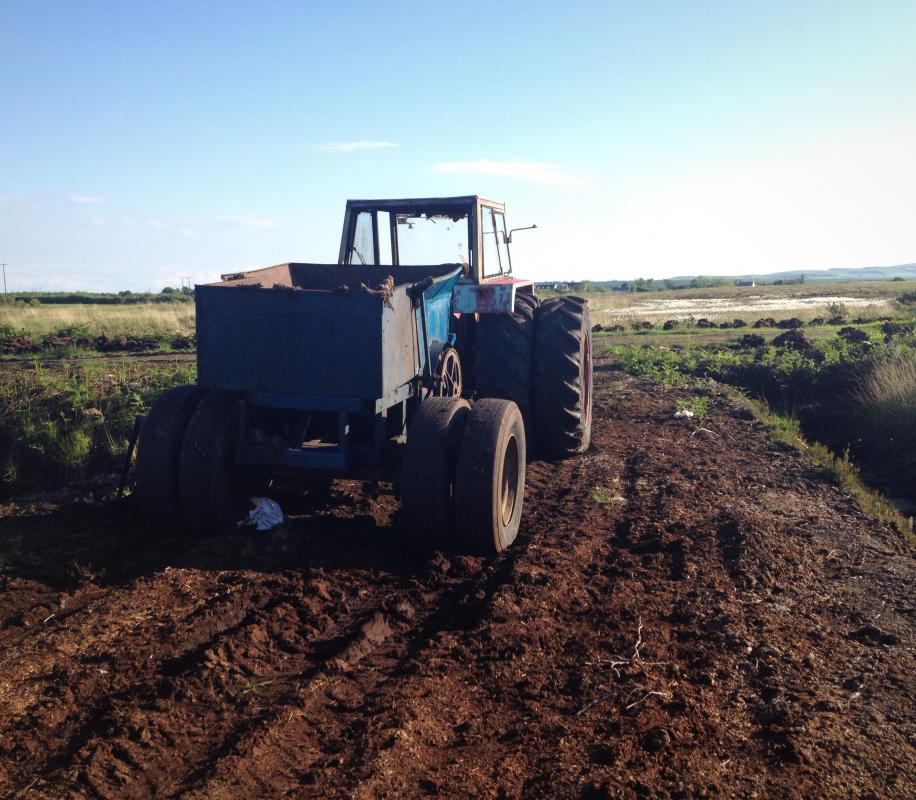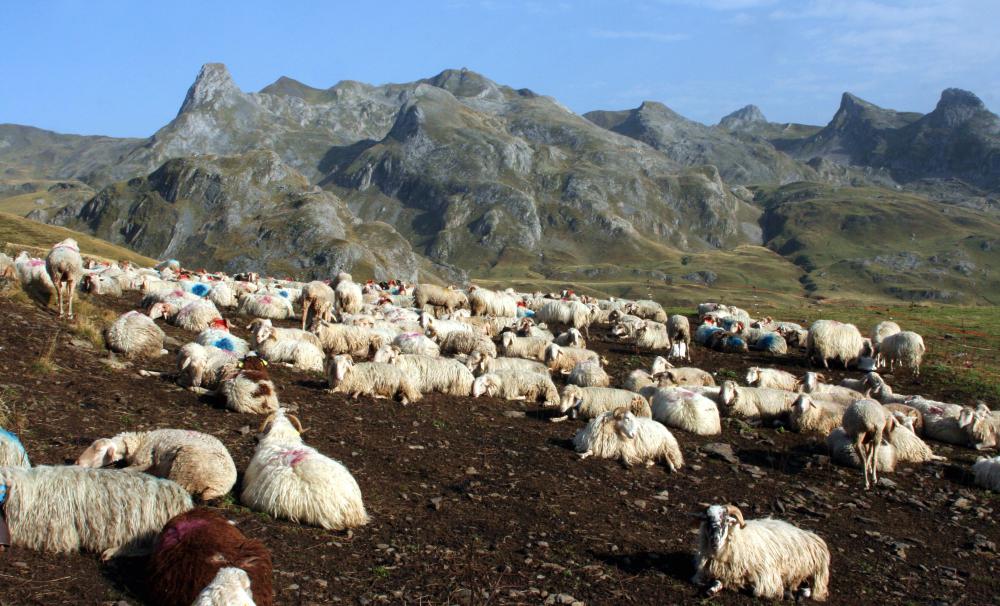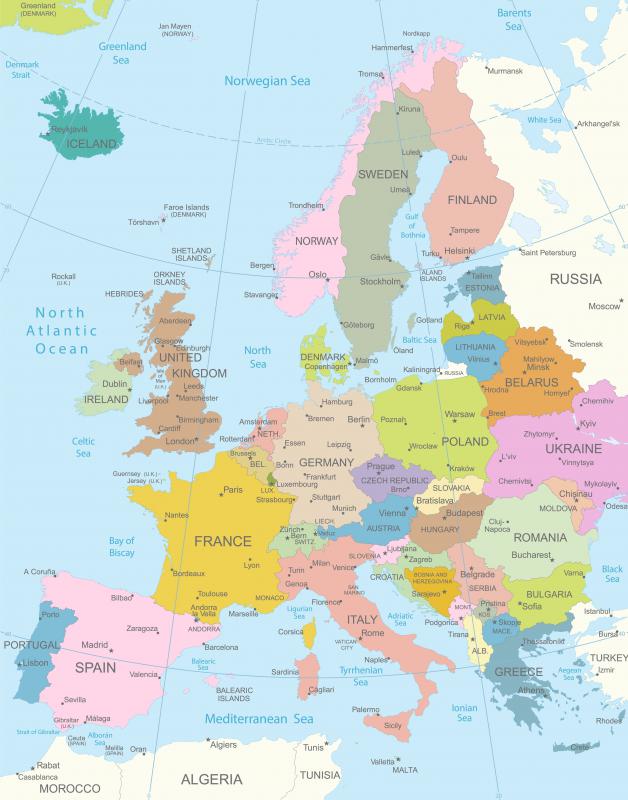At AllThingsNature, we're committed to delivering accurate, trustworthy information. Our expert-authored content is rigorously fact-checked and sourced from credible authorities. Discover how we uphold the highest standards in providing you with reliable knowledge.
What is Peat?
Peat is vegetable matter which has been partially carbonized due to the way in which it decomposes. Over time, peat deposits have the potential to evolve into coal. There are a number of uses for it, although the two primary ones are as a type of fuel and as a fertilizer. Many countries exploit and sell their peat resources, especially Ireland, Scotland, and Finland. In these nations, blocks are readily available as a fuel source, and it is also sold in less compacted form for gardeners.
The process of peat formation is very slow. Moss is one of the primary components, although it may also contain other plant matter such as grasses and shrubs. In addition, peat often contains decomposing material of animal origin. In order for the material to form, conditions must be wet, acidic, and cold. As a result, peat forms most often in bogs and marshes, which are wet with poor drainage, promoting its formation.

The cold and acidity keep decomposition rates slow. It can take hundreds or thousands of years for a deposit to build up, as layers of new plant material grow on top of layers of decomposing peat. Many cultures associated peat bogs with spirits or gods, and traces of sacrifices can be found in bogs in many parts of the world. Tollund Man, for example, is believed to have been a sacrificial offering to a peat bog. The highly acidic conditions of these bogs have preserved some of these victims remarkably well, allowing archaeologists to learn more about the periods in which they lived.

When peat is harvested, it is cut out of the bog in long strips which are compressed and dried. Harvesting has put bogs all over the world in danger, as it can be collected much more rapidly than it will be replenished, creating a dramatic change in the natural environment of the bog. Once compressed, the peat may be fired as fuel, mixed into gardens to retain moisture and promote nutrient retention, or used to create biodegradable planters for plants. It can also be used to make paper, pad livestock beds, or pack products for shipment.

In some countries with large peat deposits, steps have been taken to keep harvesting sustainable. There are also some concerns about it as a fire risk, since it can smolder for days, even underground, emitting noxious fumes and pollutants all the while. For construction crews, peat can be extremely irritating, because it is easily compressed. This means that it cannot bear any weight, making the bogs useless for any type of construction.
Frequently Asked Questions
What exactly is peat?

Peat is an accumulation of partially decayed vegetation or organic matter that is unique to natural areas called peatlands, bogs, mires, moors, or muskegs. The formation process is slow, as the organic matter decomposes anaerobically, which means without the presence of air, over thousands of years. Peatlands are significant carbon sinks, storing approximately 30% of the world's soil carbon, according to the International Peatland Society.
How does peat form?

Peat forms in waterlogged conditions where high water levels inhibit the growth of microbes that break down organic matter. Over time, dead plant material accumulates and, due to the lack of oxygen, decomposes very slowly, creating layers of peat. This process can take centuries, with peat layers growing less than a millimeter in depth each year.
Why is peat important for the environment?
Peat plays a crucial role in the environment by acting as a significant carbon store, trapping carbon that would otherwise be released into the atmosphere. It also supports unique ecosystems with diverse flora and fauna. Furthermore, peatlands regulate water flow, reduce flooding, and purify water by filtering out pollutants, making them vital for maintaining water quality.
Where can peat be found?
Peat can be found in peatlands, which are distributed across the globe, particularly in the northern hemisphere. Countries with extensive peatlands include Canada, Russia, the United States, Finland, and Sweden. These regions are characterized by cool temperatures and abundant rainfall, which are ideal conditions for peat formation.
How is peat used by humans?
Humans have used peat for centuries as a source of fuel for heating and cooking, especially in regions where other fuel sources are scarce. It is also widely used in horticulture as a soil amendment due to its ability to retain moisture and nutrients. However, its extraction can lead to environmental concerns, such as habitat destruction and increased carbon emissions.
What are the environmental concerns associated with peat extraction?
Peat extraction poses significant environmental concerns. When peatlands are drained and peat is harvested, the stored carbon is exposed to air and begins to decompose more rapidly, releasing carbon dioxide into the atmosphere and contributing to climate change. Additionally, the destruction of peatlands threatens biodiversity and disrupts water systems, leading to further ecological damage.
AS FEATURED ON:
AS FEATURED ON:















Discussion Comments
I think it's awesome that something as ordinary as bog peat can turn into coal. Who would have thought that rotting plant matter could be so useful?
I understand that there are environmental concerns, but this is a natural product of the earth. It seems like it should be safe to use as fuel.
It is unfortunate that it takes so long for peat to form, though. I don't know what is going to be done about this. What happens when we run out of peat? Do we find another natural resource that offers the same benefits?
Sphagnum peat moss can only help your garden if you mix it in with the soil very well. Otherwise, it could do harm to your plants.
I had a small vegetable garden, and I hated the thought of tilling the soil. So, I got some sphagnum peat and spread it all over the surface around the plants. I didn't dig or mix it in with the dirt at all.
It turns out that dried peat moss will actually keep water away from the soil. It has to be mixed in very well in order to help the dirt retain nutrients and water. My garden dried out and my plants began to shrivel, and it was only then that I came to know this fact about peat.
@Oceana – It is possible to grow flowers from a garden of peat. I have done it, and when you consider what peat is made of, it is probably even more nutritious than any soil you could find.
I'm sure that if you needed to add some of your own sandy soil to the bed as filler, then your flowers should still grow. The peat will help the soil retain the nutrition.
I have several large containers filled with nothing but peat, and my chrysanthemums and dianthus plants are doing well in them. You don't have to water peat as often as you do regular soil, so gardening with it saves you some time and hassle.
I have several bags of peat that my grandmother left behind when she passed away, and I've been considering using them to make a flower garden. My grandmother was really into flowers, and I would like to grow a garden in her memory.
The soil in my yard is rather sandy, though. Is it possible to grow a flower garden in a raised bed of nothing but peat, or will I need some actual soil to mix in with it? I have enough peat to fill a good sized raised bed, but I just don't know if it has the power to sustain the flowers on its own.
Post your comments